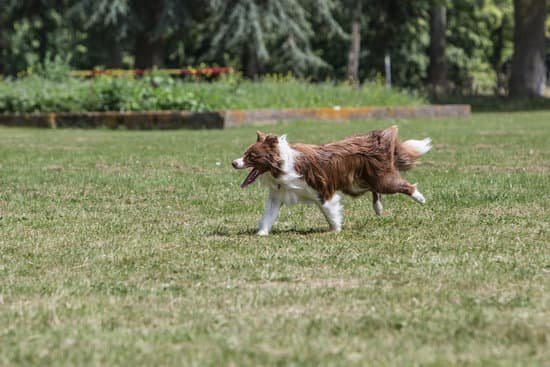Are you struggling with a furry friend who just can’t resist the urge to snack on your feathered companions? In this article, we will explore how to train your dog not to eat chickens. Understanding the instinctual behavior of dogs and their attraction to chickens is crucial in addressing this issue effectively.
The first step in addressing this problem is understanding the natural instinct of dogs and why they are drawn to chickens. Assessing the risks of allowing dogs to eat chickens is also important, as it can have serious consequences for both your pets and your poultry. Setting clear boundaries for your dog and consistently reinforcing these rules are key components of training them to resist the temptation of chicken snacks.
As we delve into effective training techniques and positive reinforcement methods, we will also discuss the importance of supervised interaction between your dog and chickens, as well as implementing physical barriers and enclosures to create a safe environment for both animals. Additionally, we will provide tips for seeking professional help from a dog trainer or behaviorist if needed, along with additional resources for maintaining harmony between dogs and chickens.
Assessing the Risks
Dogs are natural hunters and their instincts can lead them to prey on smaller animals such as chickens. Allowing dogs to eat chickens can have serious consequences for both the dog and the chickens. Chickens are often considered as livestock but they also serve as pets for many individuals or families. Therefore, it is important to assess the risks involved in allowing dogs to eat chickens.
One of the major risks of allowing dogs to eat chickens is the potential harm or even death of the chickens. Dogs may not intend to harm the chickens out of malice, but their predatory instinct can kick in when they see an opportunity. This can result in injury or death for the chickens, ultimately affecting egg production and potentially causing financial loss for chicken owners.
Another risk to consider is the impact on the dog’s behavior and well-being. Allowing a dog to fulfill its predatory instincts without any boundaries can reinforce negative behavior and lead to aggression towards other animals or even people. In addition, consuming a raw diet that includes uncooked chicken can pose health risks to dogs such as salmonella infection.
The consequences of allowing dogs to eat chickens highlight the importance of establishing clear boundaries and training techniques to deter this behavior effectively. By understanding these risks, dog owners can take proactive measures to create a safe environment for both their dogs and their feathered companions.
| Risks of Allowing Dogs to Eat Chickens | Consequences |
|---|---|
| Potential harm or death of chickens | Financial loss for chicken owners, impact on egg production |
| Impact on dog’s behavior and well-being | Reinforcement of negative behavior, potential health risks from consuming raw chicken |
Establishing Boundaries
When it comes to training your dog not to eat chickens, establishing clear boundaries is crucial. Dogs are naturally drawn to small animals like chickens due to their predatory instincts, so it’s important to set clear expectations from the beginning.
Here are some key steps to help you establish boundaries and set expectations for your dog:
1. Consistent Training: Consistency is key when it comes to setting boundaries for your dog. Whether it’s using commands like “leave it” or “stay,” make sure to consistently reinforce these boundaries during training sessions.
2. Supervision: It’s essential to supervise your dog around chickens at all times, especially during the initial stages of training. This will allow you to intervene if your dog shows any signs of predatory behavior.
3. Establishing a No-Go Zone: You can create a designated area or zone where your dog is not allowed to enter, especially where the chickens are kept. Use physical barriers such as fences or gates if necessary to reinforce this boundary.
By implementing these strategies and techniques, you can effectively set clear expectations for your dog and begin the process of training them not to eat chickens. Remember that patience and consistency are key when it comes to establishing these boundaries, and positive reinforcement plays a crucial role in encouraging good behavior around chickens.
Consistency Is Key
When it comes to training your dog not to eat chickens, consistency is crucial. Dogs thrive on routine and clear expectations, so it’s essential to implement consistent training techniques to deter this behavior. One effective method is using a command such as “leave it” or “stay away” whenever your dog shows an interest in the chickens. Be sure to use the same command each time and provide a firm, but non-threatening tone.
Another important training technique is redirecting your dog’s attention away from the chickens. For example, if you notice your dog starting to fixate on the chickens, promptly redirect their focus by engaging them in a game of fetch or asking them to perform a trick for a treat. This teaches your dog to associate positive interactions with you rather than chasing after the chickens.
Additionally, it’s important to use positive reinforcement when training your dog not to eat chickens. Whenever your dog displays good behavior around the chickens, be sure to offer praise and treats. This will help reinforce the idea that staying away from the chickens results in positive rewards. Consistency in these training techniques will help deter chicken-eating behavior and create a peaceful coexistence between your dog and your feathered friends.
| Training Technique | Description |
|---|---|
| Use of Command | Implementing consistent commands such as “leave it” or “stay away” when the dog shows interest in chickens. |
| Redirect Attention | Promptly redirecting the dog’s focus by engaging them in other activities like playing fetch or performing tricks for treats. |
| Positive Reinforcement | Offering praise and treats when the dog displays good behavior around the chickens. |
Positive Reinforcement
One effective way to train a dog not to eat chickens is through positive reinforcement. When your dog exhibits good behavior around the chickens, it’s important to reward them for their self-control and obedience. Positive reinforcement can help strengthen the desired behavior and create a positive association with the presence of chickens.
When you notice your dog showing restraint and not displaying any predatory behavior towards the chickens, immediately praise them with verbal affirmations and physical affection. Additionally, offering your dog their favorite treat as a reward for good behavior can further reinforce their self-control around the chickens. By consistently rewarding positive behavior, you can help your dog understand that being calm and respectful around the chickens is what is expected of them.
In addition to treats and praise, another form of positive reinforcement could be providing your dog with access to other activities or privileges they enjoy after displaying good behavior around the chickens. This could mean taking them for a walk, playing their favorite game, or allowing them inside the house as a way of reinforcing that good behavior around the chickens leads to positive outcomes for them.
Through consistent positive reinforcement, you can encourage your dog to view the chickens as part of their environment rather than as prey.
Supervised Interaction
Introducing your dog to chickens can be a delicate process that requires patience and supervision. It’s important to remember that dogs have natural hunting instincts, and chickens may trigger these instincts. However, with the right approach, you can teach your dog to coexist peacefully with your feathered friends.
Slow and Controlled Introduction
When introducing your dog to chickens for the first time, it’s crucial to proceed slowly and in a controlled manner. Keep your dog on a leash and allow the chickens to roam freely at a safe distance. This will allow your dog to observe the chickens without feeling the urge to chase or attack them. Gradually decrease the distance between your dog and the chickens as they become more accustomed to each other’s presence.
Positive Reinforcement
During supervised interactions, use positive reinforcement techniques to encourage good behavior from your dog. Reward them with treats, praise, or playtime when they show calm and non-threatening behavior around the chickens. This will help create a positive association between your dog and the presence of chickens.
Consistent Supervision
Even after initial introductions, it’s important to continue supervising interactions between your dog and chickens. This means not leaving them alone together until you are confident that your dog understands how to behave around poultry. Consistent supervision will ensure that any potential issues are addressed immediately and prevent any harm coming to the chickens during this learning period.
Creating a Safe Environment
When training your dog not to eat chickens, it’s important to create a safe environment that prevents any unwanted interactions between the two animals. Implementing physical barriers and enclosures can help keep your chickens out of your dog’s reach, reducing the risk of potential harm.
Here are some ways to create a safe environment for your chickens and prevent your dog from accessing them:
- Build a secure chicken coop with a sturdy fence to keep your chickens protected from potential predators, including your own dog. Make sure the coop is properly enclosed with no gaps or openings that your dog could squeeze through.
- Use chicken wire or netting to create a barrier around the coop and in areas where your chickens spend time outside. This extra layer of protection can prevent your dog from getting too close to the chickens.
- Consider using deterrents such as motion-activated sprinklers or sonic devices near the chicken coop to discourage your dog from approaching. These tools can help reinforce boundaries and keep your dog at a safe distance from the chickens.
By implementing these physical barriers and enclosures, you can create a safer environment for both your dog and your chickens, reducing the likelihood of any unwanted confrontations. It’s important to regularly inspect these barriers to ensure they are in good condition and effectively keeping the two animals separate.
Seeking Professional Help
Recognizing the Signs
If your dog’s behavior around chickens does not improve despite consistent training and positive reinforcement, it may be time to seek professional help. Signs that indicate the need for professional intervention include persistent aggression towards chickens, an inability to follow commands even with training, or heightened anxiety when in the vicinity of chickens. These behaviors may signal ingrained instincts or deeper behavioral issues that require the expertise of a professional dog trainer or behaviorist.
Choosing the Right Expert
When seeking professional help, it is essential to find a certified and experienced dog trainer or behaviorist who specializes in working with dogs exhibiting predatory behaviors. Look for professionals who use positive reinforcement-based methods and have a strong track record of successfully rehabilitating dogs with similar issues. Additionally, consider seeking referrals from other pet owners who have faced similar challenges with their dogs and have successfully addressed them with professional assistance.
The Intervention Process
During the consultation with a dog trainer or behaviorist, they will assess your dog’s behavior and evaluate the underlying reasons for their chicken-eating tendencies. They will then develop a customized training plan tailored to your dog’s specific needs and conduct hands-on sessions to address problematic behaviors.
In some cases, they may recommend desensitization exercises, counter-conditioning techniques, or specialized obedience training to modify your dog’s response to chickens. Through ongoing support and guidance, these professionals can help you implement effective strategies for managing your dog’s behavior around chickens while ensuring their safety and well-being.
Additional Tips and Resources
In conclusion, training a dog not to eat chickens requires patience, consistency, and understanding of both your dog’s instincts and the risks associated with their behavior. By establishing clear boundaries and using positive reinforcement techniques, it is possible to deter chicken-eating behavior in dogs. Supervised interaction and creating a safe environment through physical barriers are also crucial steps in maintaining a peaceful coexistence between dogs and chickens.
It is important to remember that every dog is different, and some may require professional help from a dog trainer or behaviorist. Seeking assistance when necessary can make a significant difference in successfully training your dog not to eat chickens. Additionally, staying informed through additional tips and resources can provide valuable insight into managing the relationship between dogs and chickens.
Ultimately, by taking the time to properly train your dog and implement strategies for coexisting with chickens, it is possible to create a harmonious environment where both animals can live together safely. With dedication and the right approach, owners can enjoy the company of their dogs while still raising chickens without fear of harm or conflict.
Frequently Asked Questions
How Do You Keep Your Dogs From Eating Your Chickens?
Keeping dogs from eating chickens requires proper training and management. It’s important to teach your dogs to have a calm and controlled behavior around the chickens. This might involve using positive reinforcement techniques, creating separate spaces for the dogs and chickens, and supervising their interactions until they can be trusted together.
How Do I Get My Dog to Stop Bothering My Chickens?
If your dog is bothering your chickens, it’s crucial to address this behavior promptly. Providing enough physical and mental exercise for your dog can help reduce their interest in the chickens. Additionally, teaching your dog basic obedience commands like “leave it” or “stay” can be useful in redirecting their attention away from the chickens.
How Do I Train My Dog to Be Friendly to Chickens?
Training a dog to be friendly to chickens can be done gradually and patiently. Start by introducing the dog to the chickens while on a leash and monitor their reactions closely. Rewarding calm behavior around the chickens will reinforce positive associations. With consistent training and plenty of patience, most dogs can learn to coexist peacefully with chickens.

Welcome to the blog! I am a professional dog trainer and have been working with dogs for many years. In this blog, I will be discussing various topics related to dog training, including tips, tricks, and advice. I hope you find this information helpful and informative. Thanks for reading!





